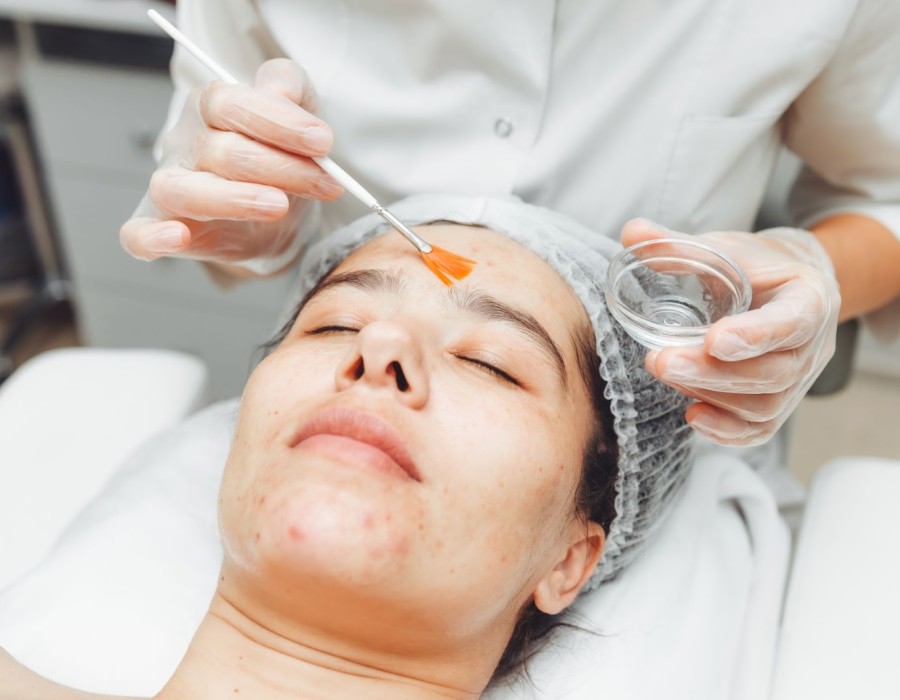In the pursuit of achieving radiant, healthy skin, the beauty industry continually introduces innovative treatments and ingredients. One such standout is the mandelic peel, a gentle yet effective chemical peel that has gained popularity for its numerous skin benefits. Derived from bitter almonds, Mandelic Peel in Dubai is known for its exfoliating properties and is suitable for various skin types and concerns. This guide will explore the benefits of mandelic peel, how it works, and why it should be a key ingredient in your skincare routine.
What is a Mandelic Peel?
A mandelic peel is a type of alpha hydroxy acid (AHA) peel that utilizes mandelic acid as its active ingredient. Mandelic acid is unique due to its larger molecular structure, which allows for slower penetration into the skin compared to other AHAs like glycolic acid. This characteristic makes mandelic peels milder, resulting in less irritation and making them suitable for all skin types, including sensitive skin.
Benefits of Mandelic Peel
1. Gentle Exfoliation
Mandelic peels provide effective exfoliation, helping to remove dead skin cells and promote cell turnover. This process reveals fresher, healthier skin underneath, leading to a brighter complexion. Unlike harsher peels that can cause redness and peeling, mandelic peels offer a gentler approach, making them ideal for those with sensitive skin or conditions like rosacea.
2. Improved Skin Tone and Texture
Regular use of mandelic peels can significantly improve skin tone and texture. By stimulating collagen production and promoting even skin cell turnover, mandelic acid helps reduce the appearance of fine lines, wrinkles, and rough patches. The result is smoother, more youthful-looking skin that radiates health.
3. Treatment for Acne and Breakouts
Mandelic acid possesses antibacterial properties that can help combat acne-causing bacteria, making mandelic peels an excellent choice for acne-prone skin. By unclogging pores and reducing excess oil production, these peels can prevent future breakouts and minimize the appearance of acne scars over time.
4. Fading Hyperpigmentation
For individuals struggling with hyperpigmentation, including dark spots and uneven skin tone, mandelic peels can be highly effective. The exfoliating properties of mandelic acid help fade dark spots and promote a more uniform complexion, making it a valuable addition to any pigmentation-fighting regimen.
5. Hydration Boost
Unlike some other chemical peels that can leave the skin feeling dry and stripped, mandelic peels help maintain the skin’s moisture balance. This hydrating effect ensures that the skin remains soft, supple, and radiant after treatment.
How Does Mandelic Peel Work?
Mandelic acid works by loosening the bonds between dead skin cells, allowing them to be easily exfoliated. As the outer layer of dead skin cells is removed, the skin undergoes a natural renewal process, revealing fresher skin beneath. The gentle nature of mandelic acid means that this process can occur without causing excessive irritation or damage to the skin.
Application Process
- Consultation: Before undergoing a mandelic peel, it’s essential to consult with a skincare professional to determine your specific skin needs and goals.
- Preparation: The skin is typically cleansed to remove any makeup, oil, or impurities before the peel is applied.
- Application: The mandelic acid solution is applied evenly across the skin, allowing it to work its magic. The duration of the treatment can vary depending on the concentration of the acid and the individual's skin type.
- Neutralization: After the recommended time, the peel is neutralized and removed, often followed by a soothing mask or moisturizer to calm the skin.
- Aftercare: Post-treatment, it’s crucial to follow a proper aftercare routine, including sun protection and hydration, to maximize the benefits of the peel.
Incorporating Mandelic Peel into Your Skincare Routine
1. Frequency of Treatment
Mandelic peels can typically be performed every 2 to 4 weeks, depending on individual skin concerns and the strength of the peel. For those new to chemical peels, starting with a milder concentration and gradually increasing as the skin adjusts is advisable.
2. Complementary Products
To enhance the effects of mandelic peels, consider incorporating products that complement their benefits:
- Gentle Cleanser: Use a mild, hydrating cleanser to prepare the skin for the peel.
- Moisturizer: Opt for a nourishing moisturizer to keep the skin hydrated post-peel.
- Sunscreen: Apply a broad-spectrum sunscreen daily to protect the skin from UV damage, as chemical peels can increase sun sensitivity.
3. Consult with Professionals
While mandelic peels can be beneficial, it’s essential to seek guidance from a qualified skincare professional. They can provide personalized recommendations based on your skin type, concerns, and goals, ensuring the best possible outcomes.
Safety and Considerations
Mandelic peels are generally safe for all skin tones and types, including sensitive skin. However, individuals with specific skin conditions or concerns should consult with a dermatologist before undergoing treatment. Some potential side effects may include mild redness or sensitivity, which typically resolve quickly.
Conclusion
Mandelic peels are a key ingredient for achieving radiant skin, offering a gentle yet effective solution for various skin concerns. With their ability to exfoliate, improve skin tone and texture, treat acne, and fade hyperpigmentation, mandelic peels are a versatile addition to any skincare regimen. By incorporating mandelic peels into your routine and following proper aftercare, you can unlock the secrets to a brighter, healthier complexion. Whether you’re new to chemical peels or looking for a milder option, mandelic acid may be the perfect solution for your skincare journey.






Comments